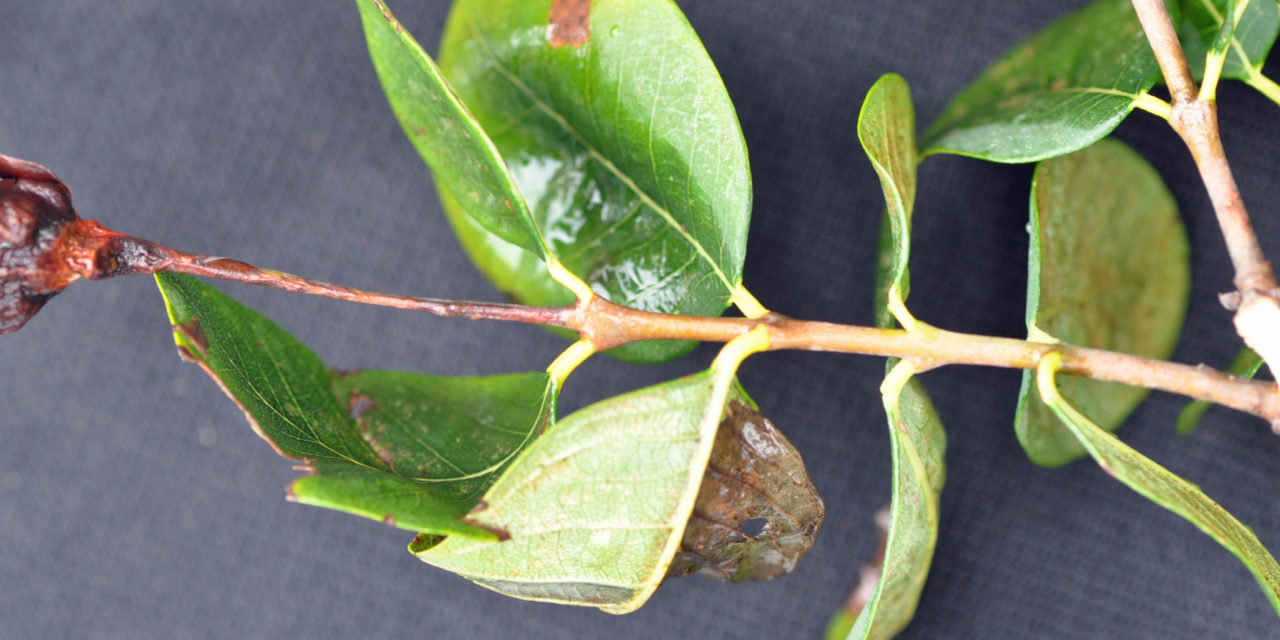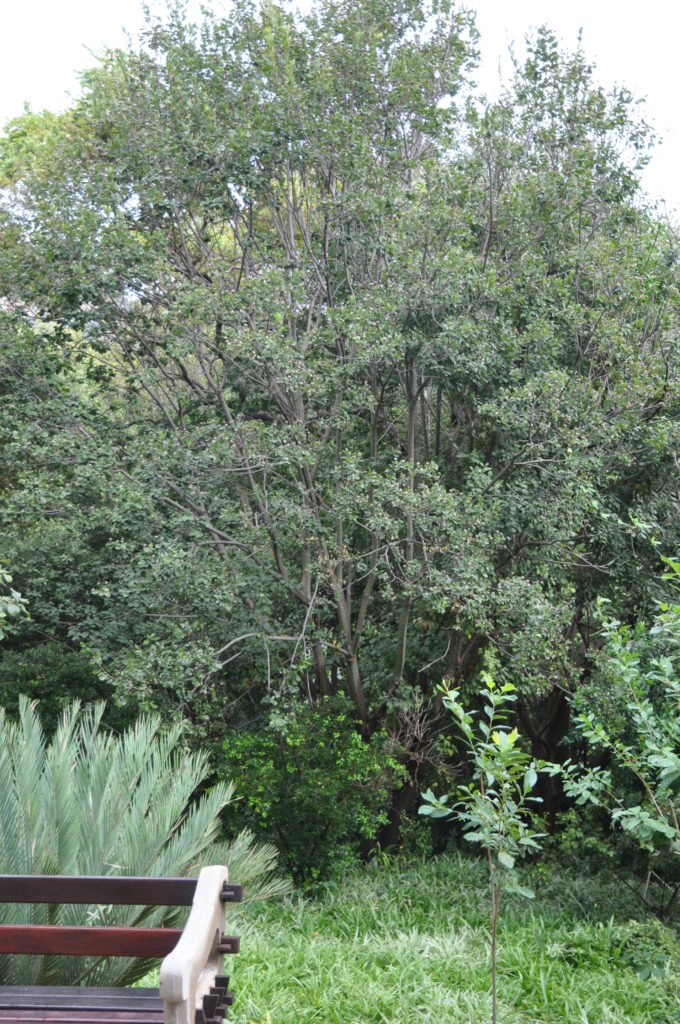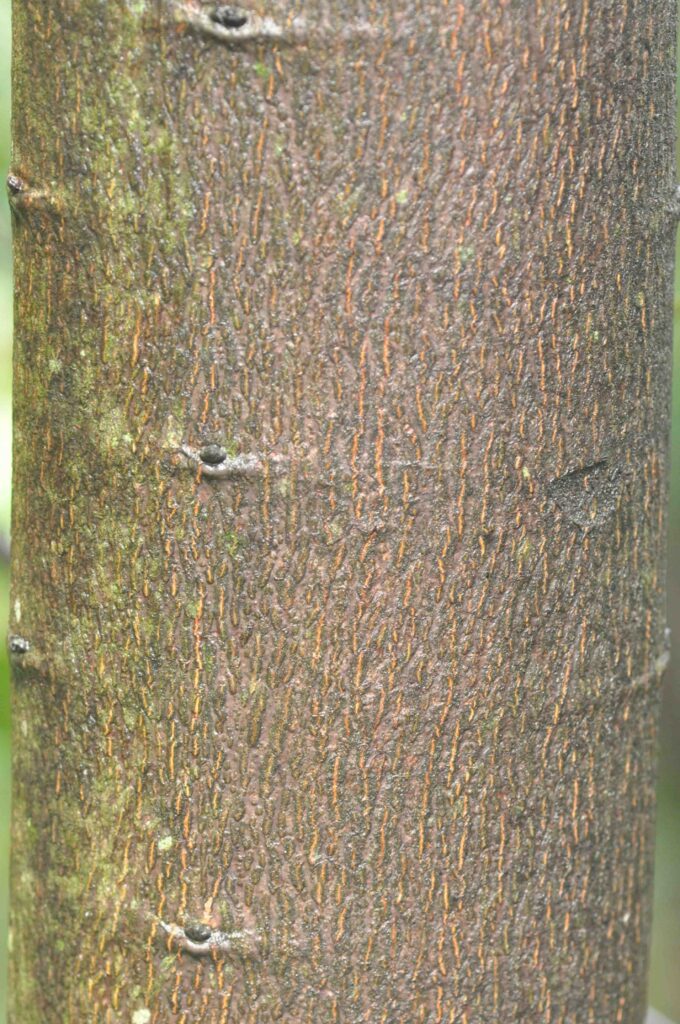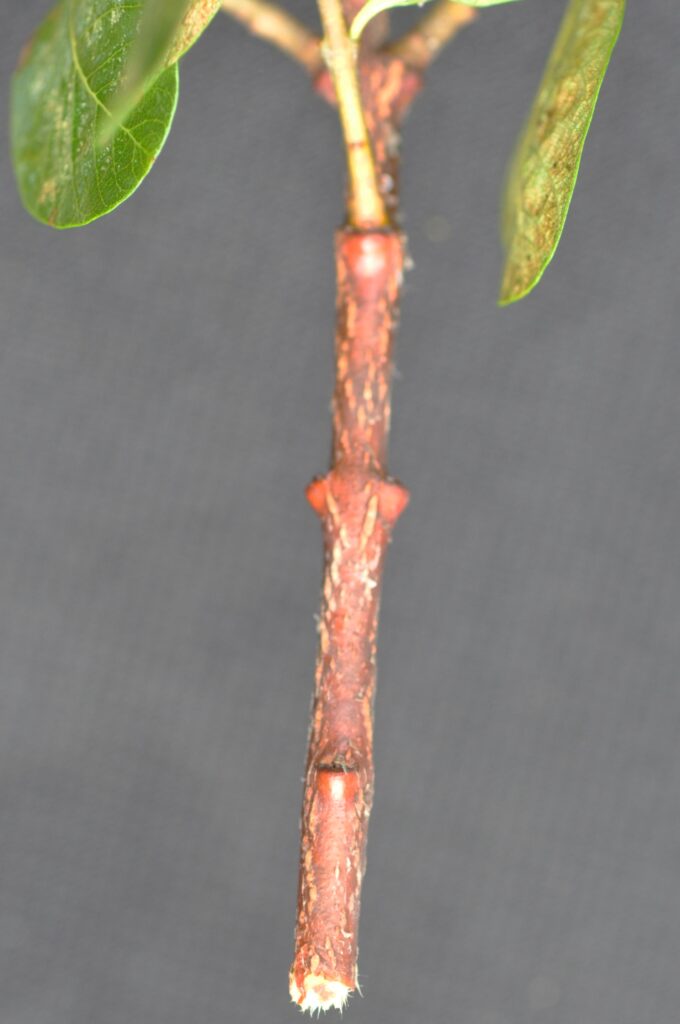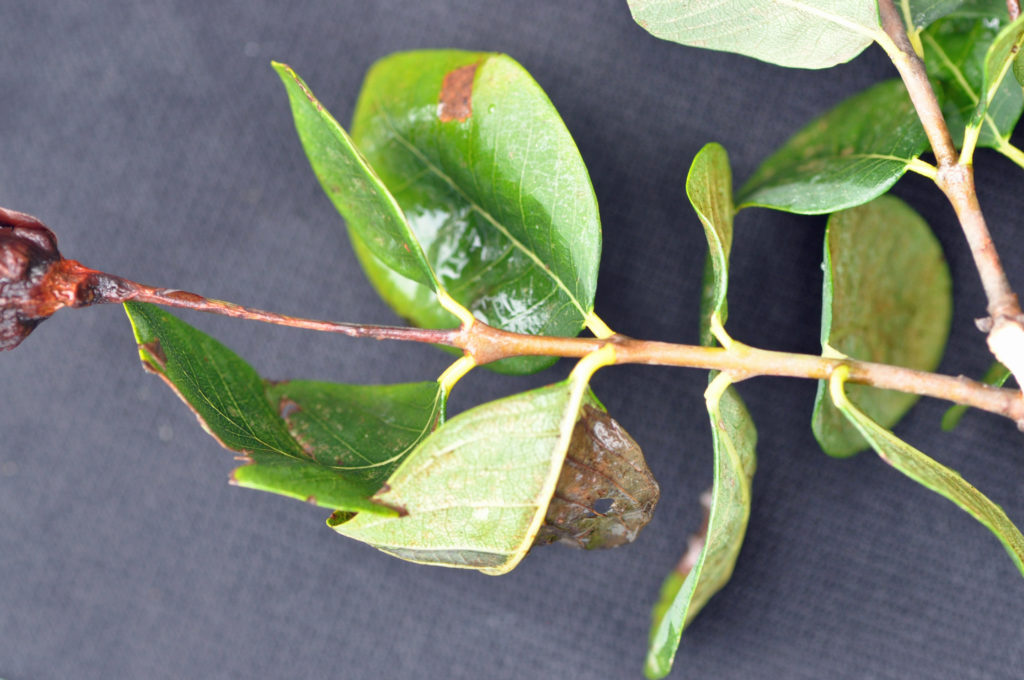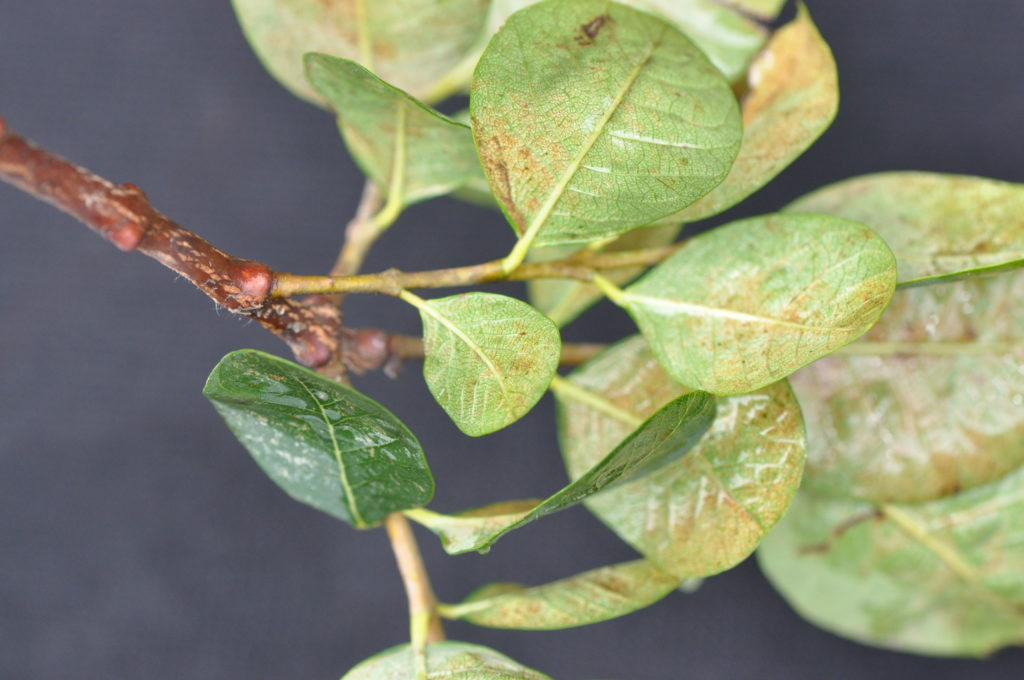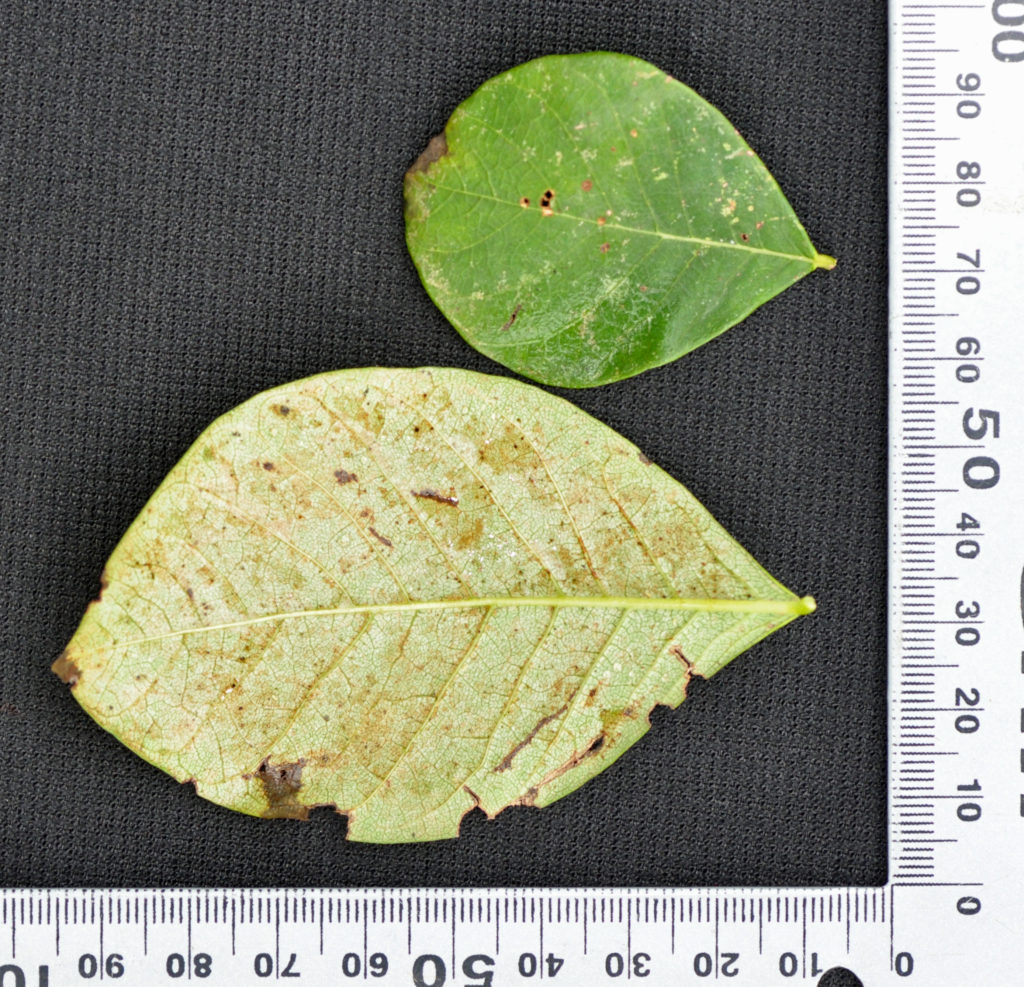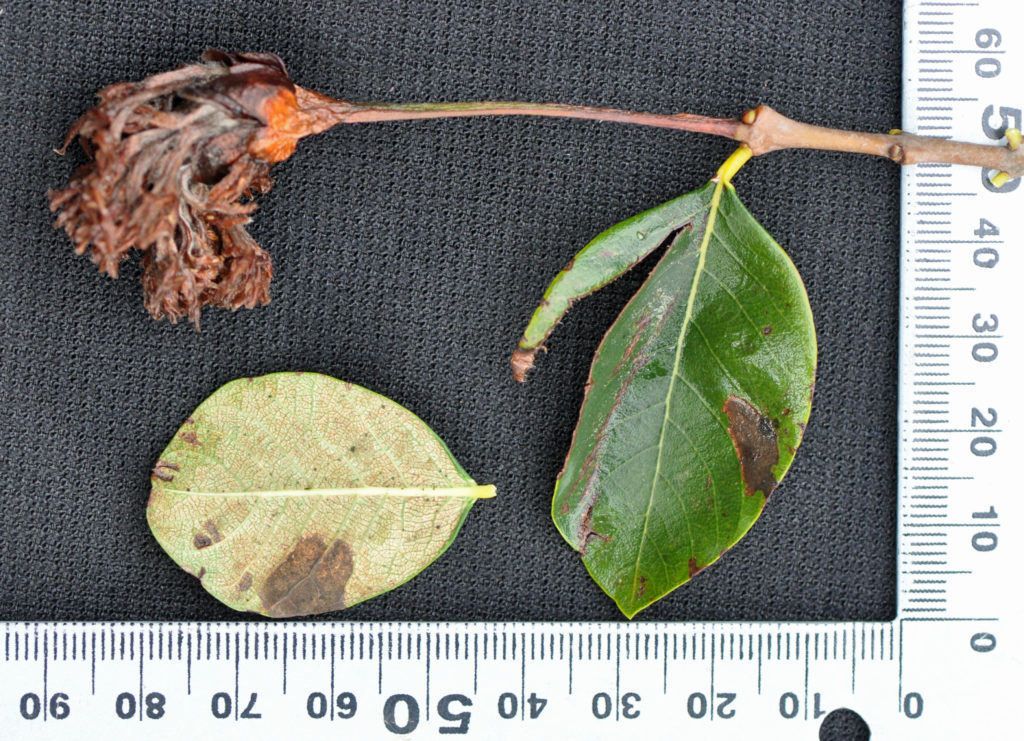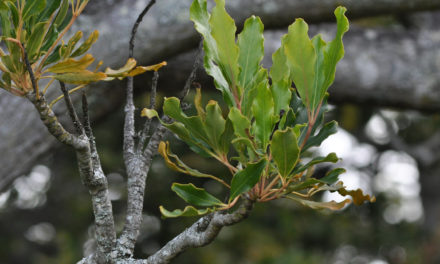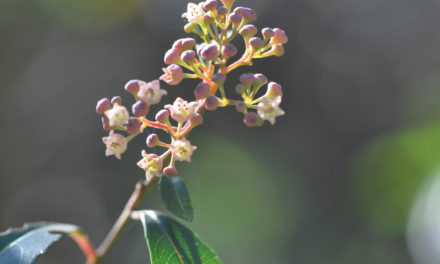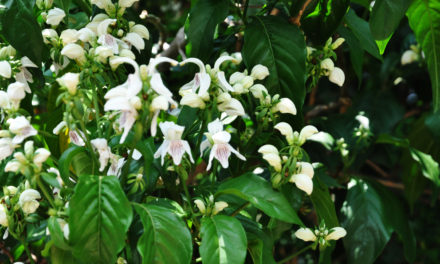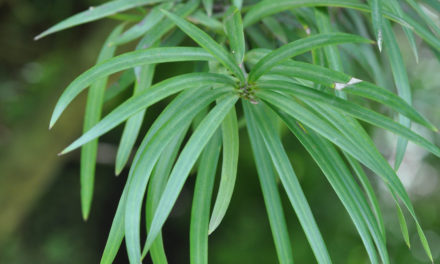General Info – summary
This dioecious Tree is up to 20m high with a smoothish bark. The simple, opposite, usually decussate Leaves are entire. Margins are entire and only new leaves are hairy. White, 4-merous Flowers are regular. Male flowers have 20 to 30 distinctive stamens. Female flowers have single pistil with an inferior ovary and a capitate stigma. Fruit is a fleshy, edible berry with a persistent calyx and 1 or 2 round seeds.
Description
Eugenia woodii
SA Tree No. 553.4.
Common names: (Afr) Bergmirt, Harige Mirt, Harige Bosmirt. (Eng) Hairy Mirt, Hairy Myrtle, Hairy Forest Myrtle, Mountain Myrtle. (siSwati) Umabelenjongosi. (Tshivenda) Tshitawatawane.
Family: Myrtaceae (Myrtle and Eucalyptus family) has 130+ genera and 3 000+ species and includes the Australian genus Eucalyptus, as well as guava and clove. These mostly evergreen trees have simple Leaves that are leathery, usually entire, gland-dotted and usually opposite. Stipules are very small or absent. Flowers are regular usually bisexual and 4 or 5-merous. However, petals may be small or absent. The many Stamens are inflexed in the bud and Anthers are 2-thecous (with 2 pollen sacs). They usually open by lengthwise slits. The usually inferior Ovary has a simple Style with a capitate Stigma. The Fruit is a capsule or berry with a persistent Calyx. Local genera with trees on this website include Eugenia, Heteropyxis, Metrosideros (Western Cape) and Syzygium.
Name derivation: Eugenia – named after Prince Francois Eugene (1663-1736) a French patron of Botany and Horticulture. He was also an exceptional war leader. woodii after an English born pioneer South African botanist: John Medley Wood (1827-1915) who collected extensively in the KwaZulu-Natal area. He took over as the curator of the Natal Botanical Gardens in 1882 and was awarded an honorary D.Sc. from the University of Cape Town in 1913.
Conservation: National Status: L C. (Least Concern). 2005 (W. Foden & L. Potter).
Tree
This small to medium sized Tree (photo 645) may reach 20m high – usually less than half of this. In forests, this slender Trunk may reach 25cm in diameter. Out in the open the trunk may be short and crooked. Young growth is initially densely hairy and young stems change from reddish brown to grey (photo 651 & 649 under Tree). Visible on photo 651 are leaf scars and lenticels (usually raised corky, oval or elongated areas on the plant that allows the uncontrolled interchange of gases with the environment). The initially hairy and smoothish trunk (photo 641) may become rough with corky flaking Bark that falls off in irregular pieces. Small vertical fissures may be visible.
- 645. 2016/04/05. Walter Sisulu NBG. Photo: David Becking.
- 641. 2016/04/05. Walter Sisulu NBG. Photo: David Becking.
- 651. 2016/04/05. Walter Sisulu NBG. Photo: David Becking.
Leaves
The initially pinkish or bronze young Leaves are covered with dense white hairs. They become hairless, and darker green and slightly glossy above; distinctly lighter below and are simple (have a single blade, which may have incisions that are not deep enough to divide the blade into leaflets). Leaves are usually Decussate (opposite pairs of leaves have successive pairs at right angles to each other i.e. rotated 90 degrees along the stem when viewed from above – photo 652 and photo 651 under Tree – from remains of leaf bases). Occasionally leaves may be 3-whorled. The slightly rolled under and the thickened Margin is entire (with a continuous margin, not in any way indented). New leaves are noticeably hairy, metallic brown or slightly red. When mature, the leaves are thinly leathery and hairless. They are broadly elliptic to obovate and up to 9 x 6cm (photo 642). There are 8-12 pairs of lateral Veins. These veins and the Midrib protrude below and are more visible here (photo 642). They may be slightly sunken above. The Apex is rounded to abruptly tapering or tapers to a blunt tip and the Base tapers gradually (photo 649). The short Petiole (leaf stalk – photo 649) is up to 1cm long and grooved above.
- 652. 2016/04/05. Walter Sisulu NBG. Photo: David Becking.
- 649. 2016/04/05. Walter Sisulu NBG. Photo: David Becking.
- 642. 2016/04/05. Walter Sisulu NBG. Photo: David Becking.
Flowers
These trees are dioecious (unisexual floral structures with male and female parts on separate plants). The white, 4-merous Flowers may be tinged with pink. They develop in 2-4 flowered racemes (simple elongated inflorescences with stalked flowers that open in succession towards the apex). The Buds are densely hairy. They usually occur singly or in a stalked cluster of 3’s, on new growth in leaf axils. The Calyx is 4-lobed, sharply distinguished from the Pedicel (stalk of a single flower) and is joined to the ovary. The Corolla has 4 petals. In the Male Flower, 20-30 distinctive Stamens are present. Each Anther has 2 thecae (pollen sacs) that are axe-shaped and dehisce through longitudinal slits. The anthers are versatile (hung or attached near the middle, and usually moving freely). In the Female Flower, there is a single Pistil (a unit of the gynoecium, the female element of the flower, composed of the Ovary, Style and Stigma). The 2-locular Ovary is inferior (one, which is seemingly below the calyx). The Style is filiform (thread or filament like) and ends in a Stigma (the part of the pistil that receives the pollen) that is capitate (shaped like a head). (Sep-Dec).
Fruit
The red to purplish black, large, and obovate to more or less spherical and creamy-yellow fleshy Fruit is a Berry (pulpy, indehiscent fruit like a grape or tomato). It is up to 2,5cm in diameter and crowned with a persistent Calyx (photo 648). It usually has only one locule by abortion. The berry usually contains a single, large, almost globose Seed. The pulp is a creamy yellow. (Dec-Mar).
- 648. 2016/04/05. Walter Sisulu NBG. Photo: David Becking.
Distribution & Ecology
These Trees are endemic in southern Africa (endemic: restricted to a particular geographic location) and occur in KwaZulu-Natal, Limpopo, Mpumalanga, Swaziland and possibly southern Mozambique. They develop on rocky outcrops or in evergreen forests and are usually within the mist belt. Baboons and birds consume the Fruit.
Ethnobotany
The edible Fruit is good tasting and can be made into jelly.
References
Boon, R. 2010. Pooley’s Trees of eastern South Africa. Flora and Fauna Publications Trust, Durban.
Burrows, J.E., Burrows, S.M., Lotter, M.C. & Schmidt, E. 2018. Trees and Shrubs Mozambique. Publishing Print Matters (Pty) Ltd. Noordhoek, Cape Town.
Coates Palgrave, M. 2002. Keith Coates Palgrave Trees of Southern Africa. edn 3. Struik, Cape Town.
Foden, W. & Potter, L. 2005. Eugenia woodii Dummer. National Assessment: Red List of South African Plants version 2020.1. Accessed on 2023/05/22.
Lawrence, G. H. M, 1951. Taxonomy of Vascular Plants, The Macmillan Company, New York. Tenth Printing 1965.
Palmer, E. & Pitman, N. 1972. Trees of southern Africa. Balkema, Amsterdam, Cape Town.
Schmidt, S. Lotter, M. & McCleland, W. 2002. Trees and Shrubs of Mpumalanga and the Kruger National Park.
van Wyk, B. & van Wyk, P. 1997 Field guide to Trees of Southern Africa. Struik, Cape Town.
https://global.britannica.com/plant/Eugenia
http://posa.sanbi.org/flora/browse.php?src=SP
https://en.wikipedia.org/wiki/John_Medley_Wood
Southern African Botanical Diversity Network Report No. 38 • 2005 •

